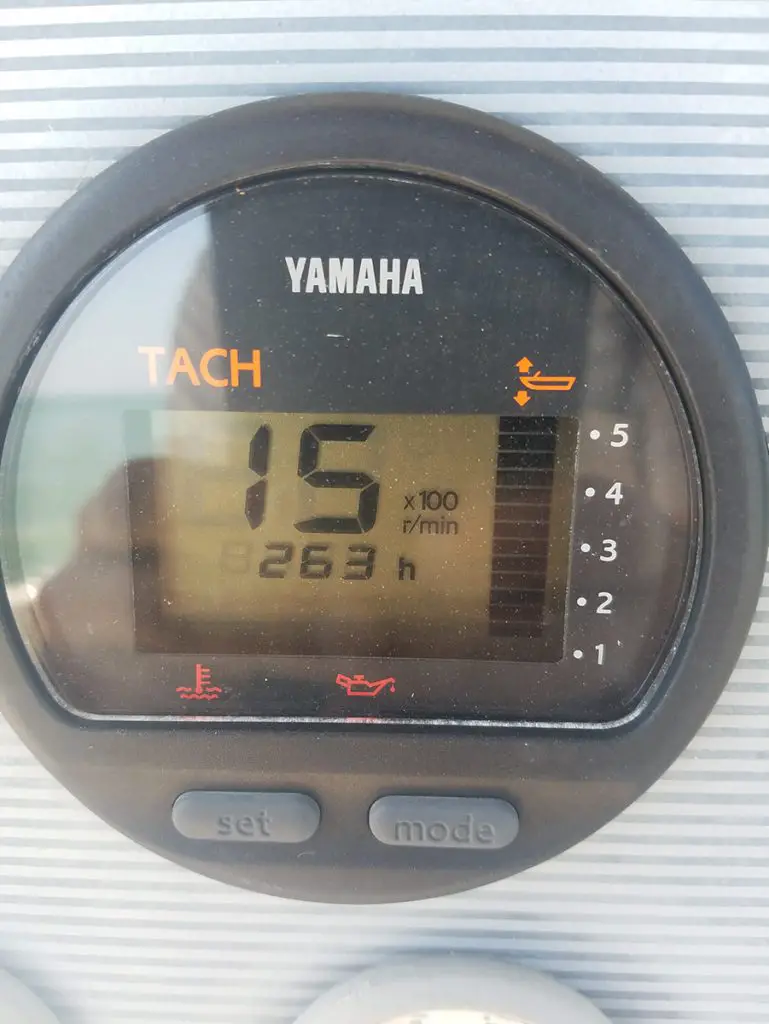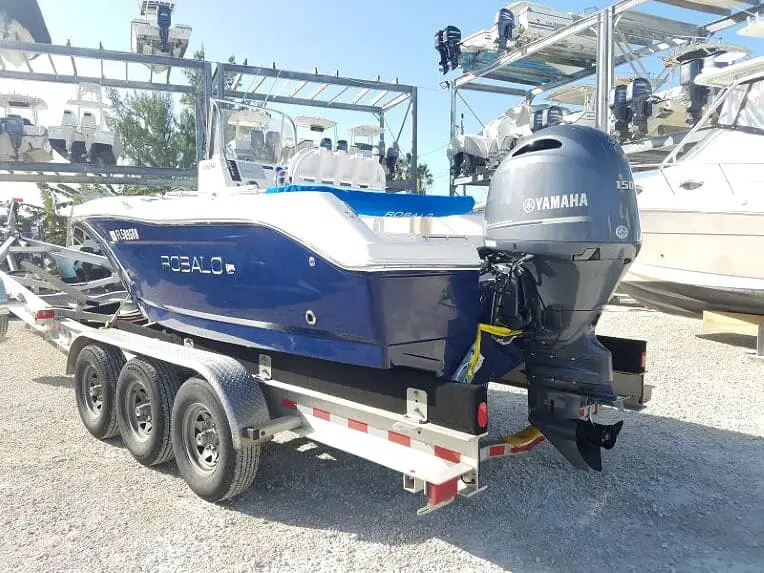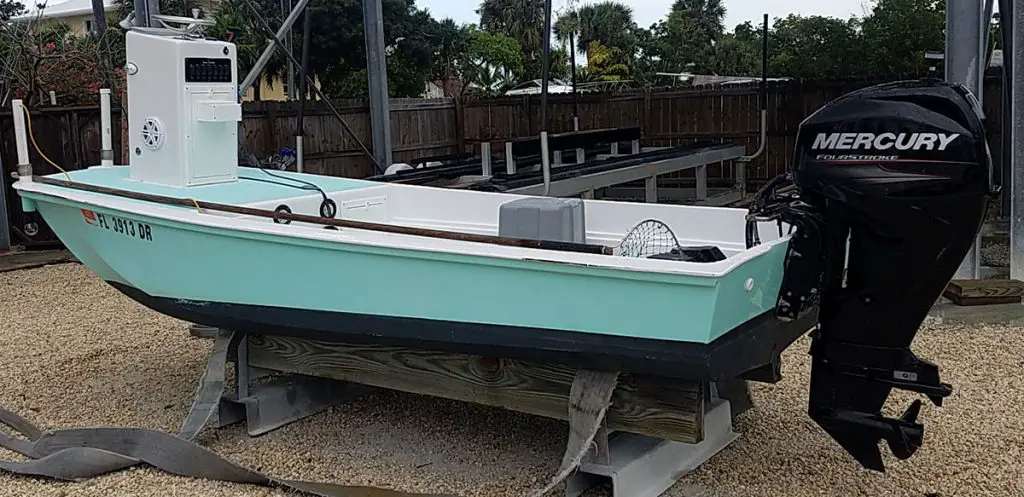Most boaters understand how expensive it is to own or operate a boat. So having an issue with it is definitely a concern, especially if you have a high idle which can damage the engine!
Why A Boat or An Outboard Will Have A High Idle In Neutral! High idles are caused primarily by too much air entering the engine after the intake. This extra air leans out the air to fuel ratio but raises the idle anywhere from 100 to 500 RPM based on the amount of air.
If you want to fix your boat’s high idle issue, then here are the steps you need to take and the direction you need to go!
Why Is My Outboard Idling High? What Causes This?
It’s very rare for too much fuel into an engine’s cylinder to cause a high idle. This usually causes a rough idle, but you can learn all about a rough idle here if that is your problem!
No, 9 times out of 10, a high idle is caused by too much air entering into the engine’s combustion chamber.
An engine is meant to run on a specific air to fuel ratio.
When we deviate from that ratio, the engine either runs lean or rich. Lean meaning not enough fuel, and rich means too much fuel.
This can be a bad thing because the fuel is also used to cool the cylinder.
It isn’t used as much as a lubricant as it is in diesel engines. When we are talking about 4-strokes that is. We’ll get to 2-strokes in a minute.

What RPM Should An Outboard Idle At?
So by now knowing what causes a high idle, your going to want to know at what RPM the outboard should idle at.
Which can vary, depending on the engine and the manufacturer.
But, in general, most engines will idle between 600 to 900 RPM.
When we talk about 2-stroke vs 4-stroke, we’ll break this down a little more.
Because one will be higher than the other. But both are going to give you the answer that you need on the engine.
If we look on the side of the engine belly pan. Or on the side of the bracket somewhere, depending on the brand and the manufacturer.
You are going to find a tag that has some information on it.
And one of those lines of information is going to be your engine’s idle RPM.
Letting you know at what RPM your engine should idle at.
What Happens When Your Idle Is Too High
As we stated a little bit earlier, this can be a bad thing.
If the engine is idling too high, then it will put unnecessary stress on the internal parts of the engine.
And then going a step above that.
What you will most likely find Is that you are going to have a hard time shifting the engine. Which is going to be putting excessive stress on the gear case.
Hard shifting or shifting problems will leave you with a loud grinding noise when shifting. (<—Click here to learn about those issues!)
This grinding noise is going to be the clutch dog that is inside your lower unit.
The high idle means that the lower unit driveshaft will be spinning faster than it should be.
Which will spin the gears that are inside of the lower unit faster than they should be. When they are shifted.
This will blow up a gear case, which can range from $3,000 to $8,000 depending on what you have!
So, let’s fix that high idle! (Here are some signs of a gear case that is beginning to fail, catch it early!)
2-Stroke Vs. 4-Stroke High Idle
There is a much larger difference between a high idle in a four-stroke than a two-stroke than you might think.
In most cases, these days, there are very few carbureted four-strokes on the market.
Most 4-strokes these days have electronic throttle valves on them. Which just means that a computer controls the throttle plate on the engine.
Which is what regulates the air that is getting into the engine.
So the idle RPM is electronically controlled, and is not changeable!
Now if you have a high idle on a non-carbureted 4-stroke, then the issue is going to be an air leak that will be found after the throttle plate, but we’ll get to that next.
When it comes to a two-stroke, these are most commonly carbureted engines.
Which will have an adjustable idle RPM that can be changed.
But will also be affected by an air leak somewhere in the system, just like the four-stroke.
But, the damage by an air leak in a two-stroke is a much greater risk than a four-stroke.
This is because, in the two-stroke, the oil is mixed into the fuel, which lubricates the cylinder walls of the engine.
So, a lean condition is more damaging in a 2-stroke than in a 4-stroke.
Mercury Outboard, Optimax, or Verado High Idle

These engines will all suffer from this air leak situation.
When it comes to an L6 or inline 6 cylinder Verado, you will commonly find these locations to leak.
Usually due to a broken clamp or busted hose. (Look here for a list of other Verado Problems!)
Starting at the throttle body assembly, we have what is called an isolator. This clamp or rubber can tear causing a leak.
You can also find one at the hoses or clamps between the supercharger and the intake air manifold. As well as the hoses between the boost control valve.
Now finally, the map sensor has a rubber boot on it on the top of the intake manifold. Which can also tear or have a broken clamp.
Leaking air into the system causes a high idle issue.
Now there are just as many locations for this to happen on a Mercury Optimax.
But this engine is a direct-injection outboard. And it utilizes an air compressor to build air pressure for the fuel rails.
Which can leak at any point in the rail, as well as the air injectors! Which can be a little harder to diagnose, so check this video out here for more information!
How Do I Lower My Idle?
Now when it comes to lowering your engine idle. There are usually idle mixture screws on carbs.
As well as idle air screws on the throttle plates of the engine throttle body assemblies.
These are pretty much only on 2-strokes unless you have a carbureted four-stroke.
And you will need to perform what is called a sync and link on the engine to set these.
Besides performing the sync and link.
You will want to refer to your engine manufacturer’s service manual in order to get the procedure to set these screws.
In order to bring your idle down and get it where it needs to be.
It’s important to go by the service manual, opposed to just turning the screw.
Because if you just reduce the air, or increase the air.
You could be covering up another issue that needs to be addressed!
Leaving you at risk!
Check Us Out!
We want to thank you for checking us out today and hopefully, this article has helped you.
You can learn way more about your boat and its systems by joining our Born Again Boating Academy where we teach you all about your boat’s systems!
You can also check us out on our Youtube Channel where we create weekly content to teach you about your boat!
And if you would like to support us to continue bringing you great content, please click the link below to Amazon where we get a commission from anything you are already going to buy! Click Here To Amazon!
Here are some other helpful articles that you might find useful :)

